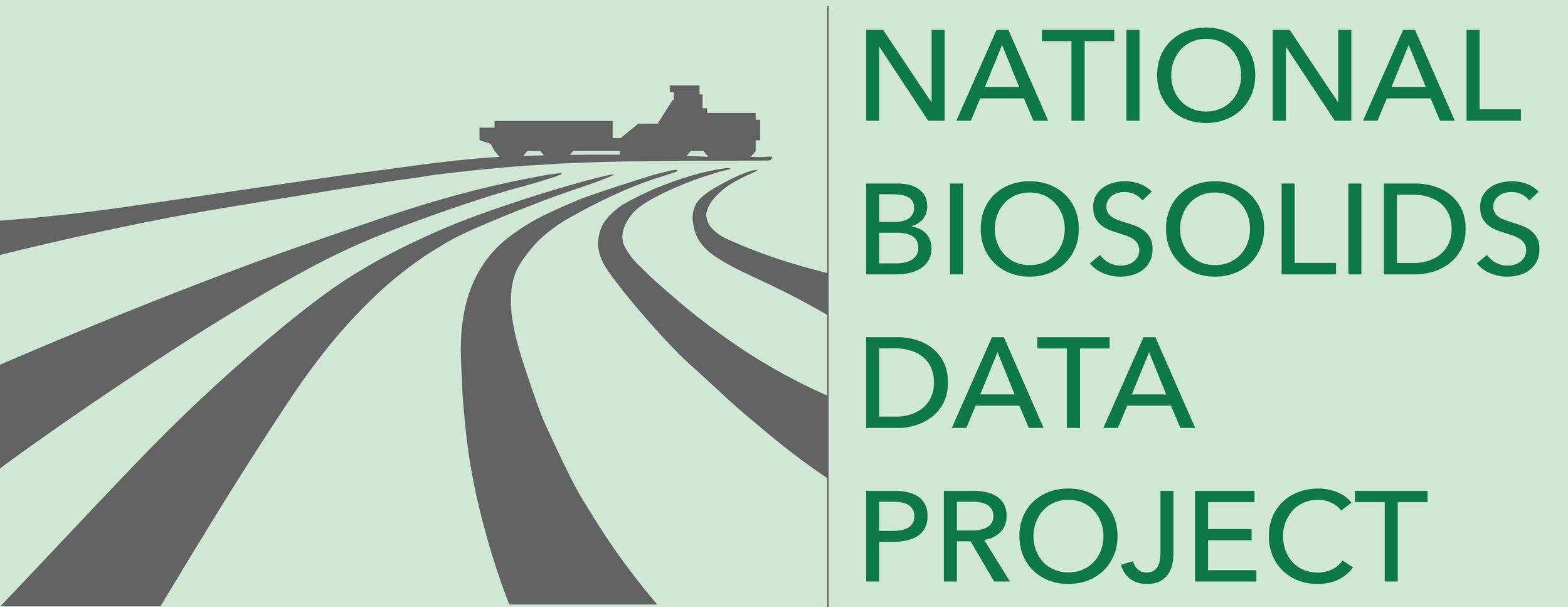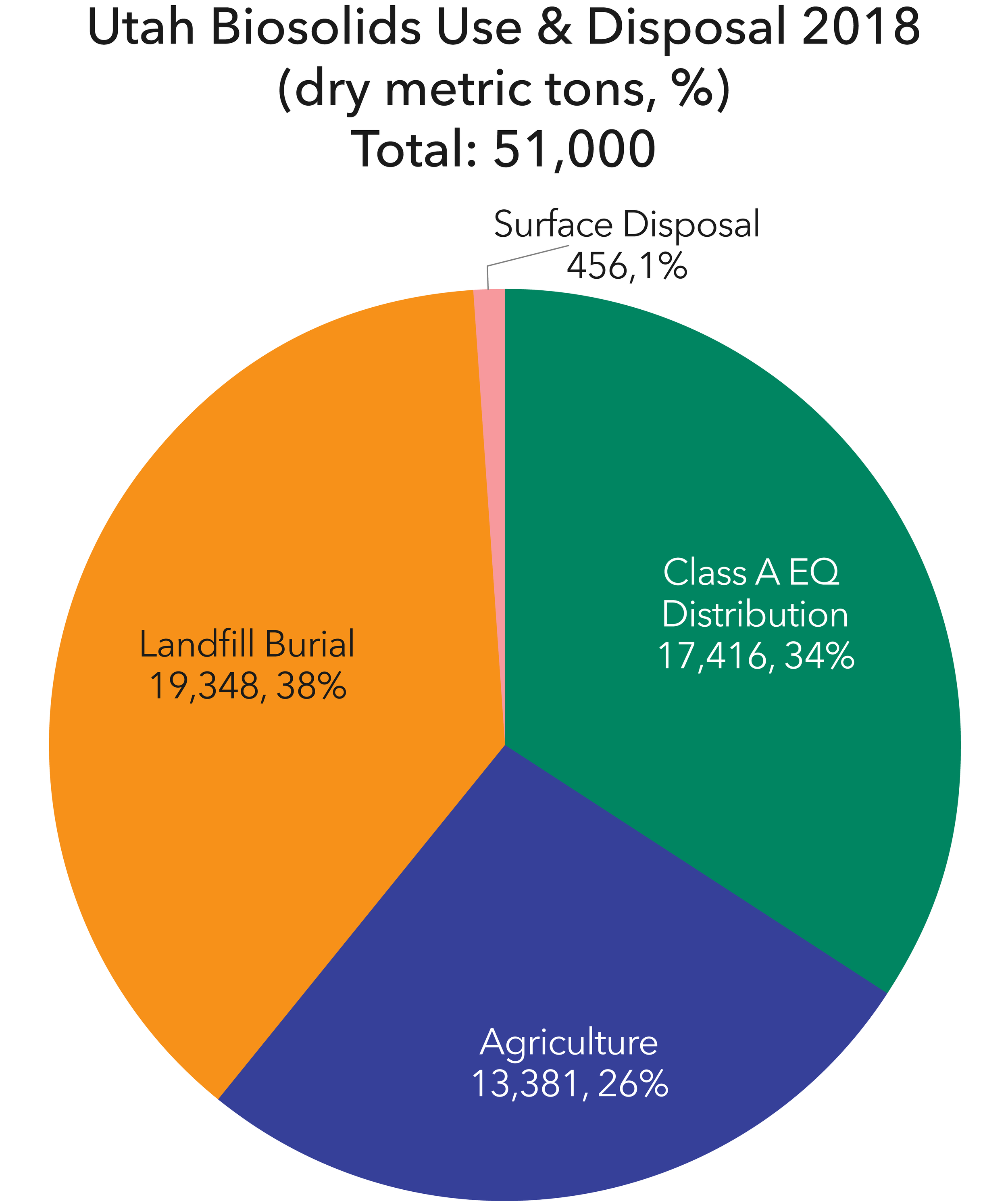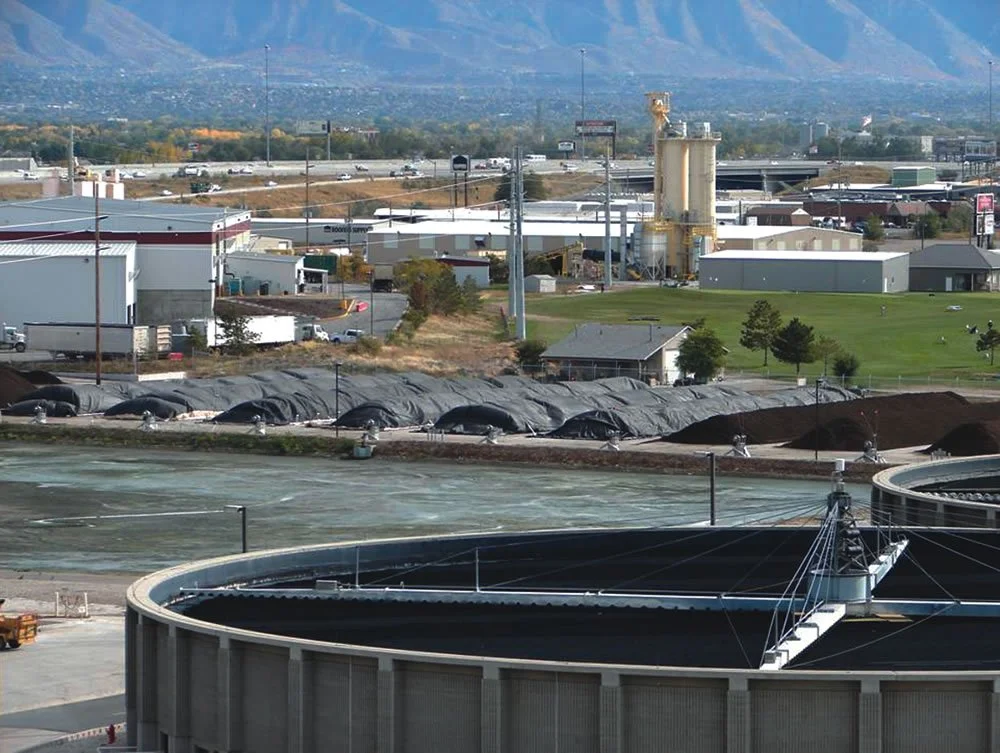State Data
Confidence in data for this state:
HIGH
2018 data unless noted.
Definitions
Terms used on this website and in data sets are defined & discussed here.
Biosolids composting in Salt Lake City. Photo courtesy of BioCycle.
State Statistics Dashboard
State Summary
● Composting of wastewater solids is common and effective in Utah’s relatively arid climate, where soil organic matter is needed. Composts go to a variety of beneficial uses in landscaping, gardens, and horticulture in the state’s major metropolitan area in the eastern portion of the Great Salt Lake Valley at the foot of the Wasatch Range. Much also goes to disposal as landfill cover.
● Landfill disposal is also common, with abundant, relatively inexpensive landfill space available at several large landfills close to the population centers, some with 100 years or more of available space at their current levels of disposal. In all, 17 Utah landfills are available to receive wastewater solids.
● There is no incineration of wastewater solids in Utah, in large part because the populated Wasatch front area is an air quality non-attainment area that precludes further air emissions.
● The Division of Water Quality at the UT Department of Environmental Quality (UT DEQ) is delegated by U.S. EPA for the Part 503 biosolids regulations and is responsible for overseeing biosolids management in the state. The agency issues wastewater permits that include all the requirements for biosolids use or disposal; those requirements are essentially the same as Part 503. Water resource recovery facilities (WRRFs) are required to report annually to UT DEQ regarding their biosolids management; those data are the basis for the numbers reported here by the National Biosolids Data Project (NBDP). Example of permit: https://documents.deq.utah.gov/water-quality/facilities/south-valley-water-reclamation-facility/DWQ-2020-001077.pdf
● One major separate preparer treats wastewater solids in Utah: E.T. Technologies’ Soils Regeneration Site at the Salt Lake Valley Solid Waste Landfill, 10 miles west of downtown Salt Lake City. It manages a wide variety of non-hazardous bulk organic, soil, and industrial wastes, creating stabilized Class A and/or Class B soils used as cover for the landfill.
● Four large water resource recovery facilities (WRRFs) serve the greater Salt Lake City area:
· Salt Lake City has a population of about 200,000. Its WRRF treats 30+ million gallons per day (MGD). In 2018, its 2,067 dry metric tons (dmt) of anaerobically-digested solids went to the E.T. Technologies site for treatment and final use as cover material at the Salt Lake Valley Landfill. Since 2004, two co-gen engines burning biogas have provided up to 60% of the WRRF’s electricity needs. As of 2022, a new Salt Lake City WRF is being built, aimed to be operational by 2025.
· The Central Valley Water Reclamation Facility (CVWRF, ~55 MGD) in Salt Lake City “has been operating a biosolids composting operation since 1992” (BioCycle, 2012). Before being composted, CVWRF solids are stabilized with anaerobic digestion (AD). In 2018, according to UT DEQ, 1,137 dmt of the biosolids went to lawn and garden uses and 3,960 dmt was used in agriculture. This “Oquirrh Mountain Compost” sells for $5/1.5 cu. ft. in bags, or $33 - $48 per cubic yard.
· South Valley Water Reclamation Facility (WRF), south of Salt Lake City, treats about 20 MGD of wastewater. The solids produced are thickened with dissolved air flotation (DAF) and dewatered with belt filter presses to ~15% solids. About 60% is heat-dried to Class A EQ standards, and the rest is untreated. In 2018, 291 dmt of the EQ biosolids was used in local agriculture, but the large majority of both products went to landfill.
· Jordan Basin WRF is the smallest (~8 MGD) and southern-most of the four WRRFs serving greater Salt Lake City. Operational since 2012, it uses an advanced bioreactor membrane process. In 2018, its solids were hauled to the E.T. Technologies site, eventually ending up at the landfill. In the early 2020s, Jordan Basin installed heat-drying and can now recycle to soils rather than only landfilling.


